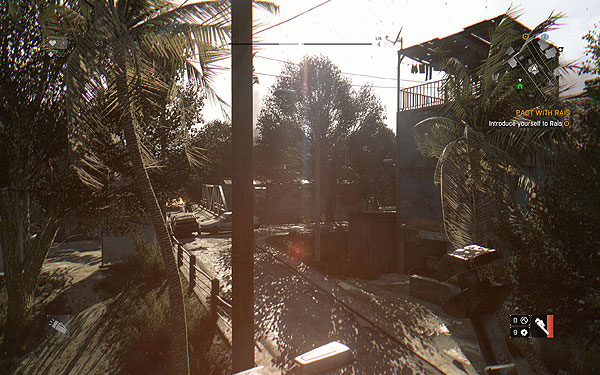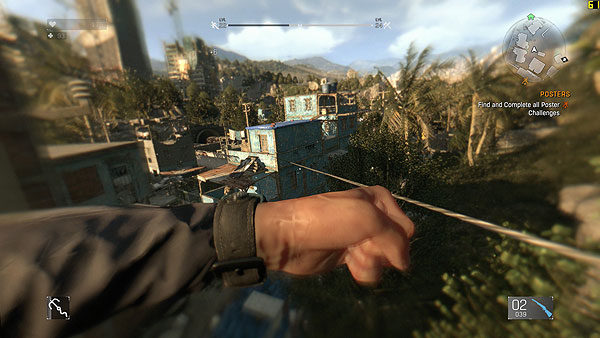Dying Light: Performance Analysis And Benchmarks
Dying Light: Great Game; Demanding Graphics Engine
Dying Light looks great at all detail level settings, and to play it comfortably at 1080p with low or medium details enabled, a GeForce GTX 750 Ti is your best bet. Picking one up for as little as $150 is hard to argue against when it bests the more expensive Radeon R9 270X. This is my recommended minimum card for this game if you're not too picky about staying above 60 FPS at all times.
To play without stuttering or annoying frame rate drops, the GeForce GTX 980 is naturally your best bet at 1920x1080 and up if you want to maximize graphics quality. As usual, 4K absolutely wrecks performance, so I can't recommend any specific card for that resolution since everything we tested averaged within 6 FPS of each other. Only Nvidia's GeForce GTX 980 was able to maintain a minimum above 25 FPS. In general, AMD graphics cards don't perform as well as GeForce boards in this title, especially when we get to the high-end.
When it comes to your platform, Dying Light is all about an efficient architecture. Even the Core i3-3220 sustains a minimum frame rate over 30 with maximum details enabled at 1080p. AMD's FX family isn't as successful, though it enables passable performance with minimum drops down to 26 FPS. This could be mitigated if you're willing to dial back detail.
Scary, atmospheric, visually appealing...Dying Light is the full package. It offers an engaging story, memorable landscapes and enough diversion that you'll want to play through it again. I have no problem recommending this game. It doesn't matter if you're looking for a great single-player experience or a co-op romp. You'll get both. Just keep in mind that Dying Light reaches its full potential when the end-game is played with friends online.
Get Tom's Hardware's best news and in-depth reviews, straight to your inbox.
Current page: Dying Light: Great Game; Demanding Graphics Engine
Prev Page Results: 1440p, 4K And CPU-
chimera201 i5 in FPS chart, i7 in FPS over time chart. Which one is it?Reply
Edit: Gotta say that FX 9590 looks like a joke -
alidan there is one setting in the game, i believe its draw distance, that is able to halve if not drop the games fps to 1/3rd what you would get if you set it to minimum, and from what people have tested, it impacts gameplay in almost no meaningful way.Reply
what was that set to?
did you change it per benchmark?
is it before or after they patched it so even on max draw distance they lowered how far the game was drawing?
i know on my brothers 290X, i dont know if he was doing 1920x1200 or 2560x1600 was benching SIGNIFICANTLY higher than is shown here.
when you do benchmarks like this in the future, do you mind going through 3 or 4 setups and trying to get them to play at 60fps and list what options you have to tick to get that? it would be SO nice having an in depth analysis for games like this, or dragon age which i had to restart maybe 40 god damn times to see if i dialed in so i have the best mix between visuals and fps... -
rush21hit Q6600 default clockReply
2x2GB DDR2 800mhz
Gigabyte g31m-es2L
GTX 750Ti 2GB DDR5
Res: 1366x768
Just a piece of advice to anyone on about the same boat as mine(old PC+new GPU and want to play this), just disable that Depth of Field and/or Ambient Occlusion effect(also applies on any latest game titles). And you're fine with your new GPU + its latest driver. Mine stays within 40-60FPS range without any lag on input. While running it on Very High Preset on other things...just without those effects.
Those effects are the culprits for performance drops, most of the time. -
Cryio Was Core Parking taken into account when benchmarking on AMD hardware ? It makes no sense that the FX 4170 is faster than the 9590.Reply
The game works rather meh on my 560 Ti and Fx 6300 @4.5 GHz. But once I mess with the core affinity in task manager my GPU is getting 99% usage and all is for with the world. -
ohim Just shows how badly they optimize for AMD hardware ...no wonder everything works faster on Intel. This comes from an Intel CPU user BTW.Reply -
xpeh Typical Nvidia Gameworks title. Anyone remember Metro: Last Light? Unplayable on AMD cards until 4A issued a game update a few months later. Can't make a card that competes? Pay off the game developers.Reply -
Grognak @ xpeh - Couldn't agree more. A 750 Ti beating a 270X? 980 better than 295X2? I'm gonna stay polite but this is beyond ridiculous. This is pure, unabashed, sponsored favoritism.Reply
Edit: after checking some other sites it seems the results are all over the place. Some are similar to Tom's while others appear to be relatively neutral regarding both GPU and CPU performance (though the FXs still struggle against a modern i3) -
Empyah Sorry guys but you messed something up in these tests - cause my 290X is getting higher averages than your 980(i got an 4930k and view distance at at 50%), everybody knows know that you are heavily biased towards Nvidia and Intel, to the point it stops being sad and starts being funny how obvious it is - but if this test is on purpose we have ourselves found a new low today - cmon guys were in the same boat here - we love hardware and want competition.Reply -
silverblue Looks like very high CPU overhead with the AMD drivers, and really poor use of multiple cores with the CPU test. The former can be solved easier, the latter sounds like the developers haven't yet grasped the idea of more than two CPU cores working on a problem. Is this game really heavy on the L3 cache? It could explain major issues for the 9590 in trying to use it effectively with more cores and its higher clock speeds counting for naught (and/or the CPU is being throttled), but as the L3 cache is screwed on FX CPUs, that would also have a detrimental effect on things - it'd be worth testing a 7850 alongside a Phenom II X4/X6 to see if the removal of L3 or falling back to a CPU family with good L3 would make any sort of difference to performance.Reply

